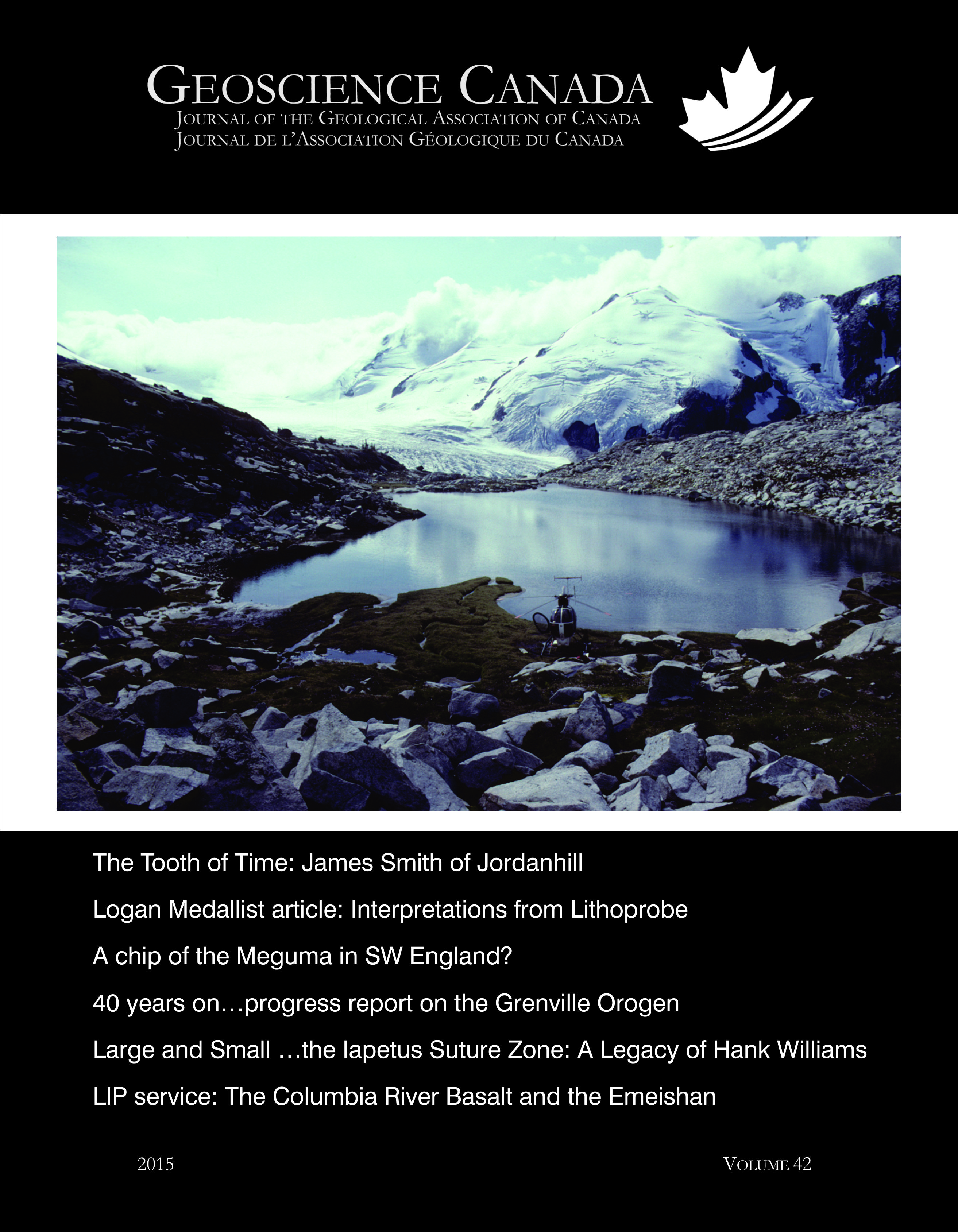Published 2015-02-18
How to Cite
Abstract
The Late Permian Emeishan large igneous province (ELIP) covers ~0.3x106 km2 of the western margin of the Yangtze Block and Tibetan plateau of SW China with displaced, correlative units in northern Vietnam (Song Da zone). The ELIP is of particular interest because it contains numerous world-class base metal deposits and is contemporaneous with the Late Capitanian mass extinction. The flood basalts are the signature feature of the ELIP but there are also picritic and silicic volcanic rocks and layered mafic–ultramafic and silicic plutonic rocks exposed. The ELIP is divided into three zones (i.e. inner, middle and outer) which correspond to a decrease in crustal thickness from the inner to the outer zone. The eruptive age of the ELIP is ~260 Ma and is constrained by paleomagnetic observations to an interval of ≤ 3 m.y. The presence of picritic and basaltic volcanic rocks is evidence for a high temperature regime; however, it is uncertain if these magmas were derived from sub-continental lithospheric mantle or sub-lithospheric mantle (i.e. asthenosphere or mantle plume) sources or both. The range of Sr (ISr ≈ 0.7040 to 0.7132), Nd (eNd(T) ≈ -14 to +8), Pb (206Pb/204PbPb1 ≈ 17.9 to 20.6) and Os (gOs ≈ -5 to +11) isotope values of the ultramafic and mafic rocks does not permit a conclusive answer to source origin but it is clear that some rocks were affected by crustal contamination. However, the identification of depleted isotope compositions suggests that there is a sub-lithospheric mantle component in the system. The ELIP is considered to be a mantle plume-derived large igneous province and may have contributed to ecosystem collapse during the latest Capitanian.
SOMMAIRE
La grande province ignée d’Emeishan de la fin du Permien (ELIP) s’étend sur environ 0,3 x 106 km2 à la marge ouest du bloc Yangtze et du plateau tibétain du sud-ouest de la Chine, avec des unités corrélatives déplacées dans le nord du Vietnam (zone de Song Da). L’ELIP est intéressant parce qu’il renferme de nombreux gisements de métaux de base de classe mondiale et qu’il est contemporain de l’extinction de masse de la fin du Capitanien. Les basaltes de plateau sont la signature géologique de l’ELIP, bien qu’on y rencontre aussi des roches volcaniques picritiques et siliciques ainsi que des formations stratifiées de roches mafiques à ultramafiques et plutoniques acides. L’ELIP est divisé en trois zones (interne, médiane et externe) correspondant à une diminution de l’épaisseur crustale de la zone interne vers la zone externe. L’éruption de l’ELIP date d’environ 260 Ma mais les observations paléomagnétiques limitent sa durée à ≤ 3 m.a. La présence de roches volcaniques picritiques et basaltiques indique un régime à haute température mais on ne sait pas si ces magmas proviennent de sources mantelliques lithosphériques sous-continentales ou sous-continentales mantelliques (c.-à-d. asthénosphère ou panache mantellique) ou des deux. La gamme des valeurs isotopiques Sr (ISr ≈ 0,7040 à 0,7132), Nd (eNd(T) ≈ –14 à +8), Pb (206Pb/204PbPb1 ≈ 17,9 à 20,6) et Os (gOs ≈ –5 à +11) des roches ultramafiques et mafiques ne permet pas de décider de l’origine de la source mais il est clair que certaines roches ont subis de contaminations crustales. Cependant l’existence de compositions isotopiques appauvries indique la présence dans le système d’une composante mantellique sous-lithosphérique. L’ELIP est considéré comme une grande province ignée dérivée d’un panache mantellique qui pourrait bien avoir contribué à l'effondrement de l’écosystème à la toute fin du Capitanien.
